Jan. 31, 2024
Prelims Pointers
Jan. 31, 2024

About H-1B Visa:
- It is a non-immigrant visathat allows US companies to employ foreign workers in speciality occupations that require theoretical or technical expertise for a specified period.
- A speciality occupation is one that requires the application of a body of highly specialised knowledge and the attainment of at least a bachelor’s degree or its equivalent.
- The intent of the H-1B provisions is to help employers who cannot otherwise obtain needed business skills and abilities from the U.S. workforce by authorising the temporary employment of qualified individuals who are not otherwise authorised to work in the United States.
- Occupations that qualify for the H-1B visa are typically in fields such as technology, finance, engineering, architecture, or more.
- Eligibility: In order to be eligible for the H1B visa, you will need:
- A valid job offer from a U.S. employer for a role that requires speciality knowledge
- Proof of a bachelor’s degree or equivalent experience in that field
- The US employer must show that there is a lack of qualified U.S. applicants for the role.
- Cap:
- The annual H-1B visa limit is 85,000. There are 65,000 regular H-1B visas each year, and an additional 20,000 visas are reserved for applicants with advanced degrees.
- Some exceptions to the H-1B visa cap include people entering the U.S. to work in higher education or affiliated research/non-profit organisations.
- Applicants are selected for adjudication via a lottery system.
- Features:
- The H-1B visa is valid for three yearsand can be extended one time for an additional three years. In general, the H-1B is valid for a maximum of six years.
- There is no limit to the number of H1-B Visas that an individual can have in his or her lifetime.
- H1-B holders can seek a Green Card or Lawful Permanent Residency for themselves and their families.
- If the H1-B holder is changing jobs, he or she must reapply for a new visa.
Prelims Pointers
Jan. 31, 2024

About Alzheimer's Disease:
- It is a brain condition that causes a progressive decline in memory, thinking, learning, and organising skills.
- It is the most common type of dementia, accounting for 60-80% of all dementia cases.
- It involves parts of the brain that control thought, memory, and language.
- It can seriously affect a person’s ability to carry out daily activities.
- The condition usually affects people aged 65 years and over, with only 10% of cases occurring in people younger than this.
- Cause: The exact cause of Alzheimer's disease is not fully understood, but it is believed to be influenced by a combination of genetic, environmental, and lifestyle factors.
- Symptoms:
- The early signs of the disease include forgetting recent events or conversations.
- Over time, it progresses to serious memory problems and loss of the ability to perform everyday tasks.
- Treatment: There’s no cure for Alzheimer’s, but certain medications and therapies can help manage symptoms
What is Dementia?
- Dementia is not a specific disease but is rather a general term for the impaired ability to remember, think, or make decisions that interfere with everyday activities.
- Alzheimer’s disease is the most common type of dementia. However, there are several other types of dementia, each with its own underlying causes. Some of the common types of dementia include Vascular Dementia, Lewy Body Dementia, Frontotemporal Dementia, and Mixed Dementia.
- Though dementia mostly affects older adults, it is not a part of normal ageing.
Prelims Pointers
Jan. 31, 2024

About Snow Leopard:
- It is a large, long-haired Asian cat, classified as either Panthera uncia or Uncia uncia in the family Felidae.
- Geographic Range:
- Snow leopards live across a vast area in northern and central Asia's high mountains, including the Himalayan region.
- In the Himalayas, they live in high alpine areas, mostly above the tree line and up to 18,000 feet in elevation.
- They are found in 12 countries, including China, Bhutan, Nepal, India, Pakistan, Russia, and Mongolia.
- In India, it is seen in Jammu and Kashmir, Himachal Pradesh, Uttarakhand, Sikkim and Arunachal Pradesh.
- Features:
- Measuring from nose to tail, the length of an average adult is 1000 to 1300 mm.
- They have thick grey and yellow-tinged fur, with solid spots on their head, neck, and lower limbs and rosettes over the rest of the body.
- They also have very long, thick tails that they use for balancing on rocks and wrapping around their bodies for protection from the cold.
- They are solitary, and the only prolonged social contact occurs while females are raising their cubs.
- Conservation status:
- IUCN Red List: Vulnerable
- CITES: Appendix I
- Wildlife (Protection) Act 1972: Schedule I
Prelims Pointers
Jan. 31, 2024
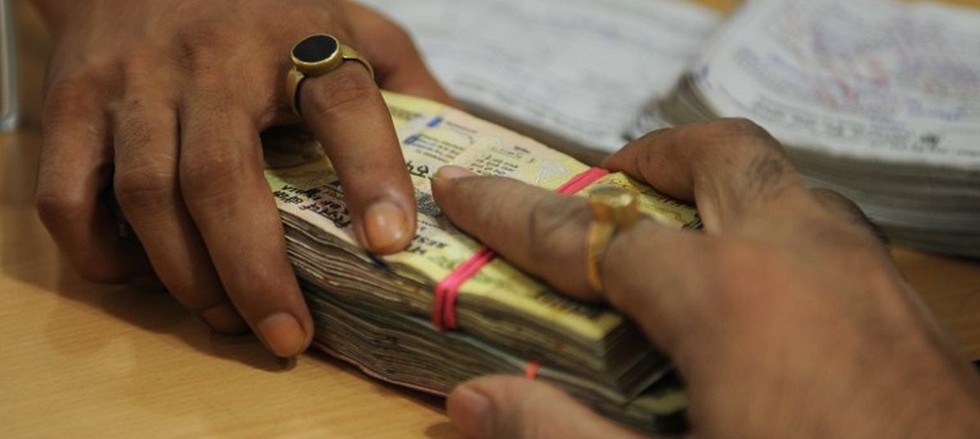
About Corruption Perception Index (CPI):
- It is an annual index released by Transparency International, a global civil society organisation.
- Since its inception in 1995, the Corruption Perceptions Index has become the leading global indicator of public sector corruption.
- The CPI ranks 180 countries and territories by their perceived levels of public sector corruption on a scale of zero (highly corrupt) to 100 (very clean).
- It uses data from 13 external sources, including the World Bank, World Economic Forum, private risk and consulting companies, think tanks and others.
- The scores reflect the views of experts and business people, not the public.
- Highlights of CPI 2023:
- CPI-2023 results show that most countries have made little to no progress in tackling public sector corruption.
- CPI global average score remains unchanged at 43 for the twelfth year in a row.
- Denmark topped the index for the sixth consecutive year.
- Somalia was ranked last, other countries occupying the bottom spots included: Venezuela, Syria, South Sudan and Yemen.
- India has tied with Maldives, Kazakhstan, and Lesotho to rank at 93 out of 180 countries. In 2022, India was ranked at 85.
- Pakistan scored 29 with a rank of 133 and China, scored 42 occupying rank 76.
Prelims Pointers
Jan. 31, 2024

About Eravikulam National Park:
- Location: It is located along the Western Ghats in the Idukki district of Kerala.
- It was declared a National Park in 1978.
- The Park covers an area of 97 sq. km.
- The highest peak south of the Himalayas, the Anamudi (2695 metres), is situated on the southern side of the park.
- This is also the land of “Neelakurinji”, the flower that blooms once every twelve years.
- Climate: The park receives heavy showers during the southwest (June/July) and retreating (October/November) monsoons and is one of the wettest areas in the world.
- Vegetation: The major part of the park is covered with rolling grasslands, but several patches of shola forests are also found in the upper part of the valley.
- Flora:
- Important flora includes Actinodaphne bourdilloni, Microtropis ramiflora, Pittosporum tetraspermium, Sysygium aronottianum, Chrysopogon Zelanieus, etc.
- The shola grasslands are exceptionally rich in balsams and orchids, including the long-thought-extinct variety Brachycorythis wightii.
- Fauna:
- The Nilgiri Tahr, Gaur, Sloth Bear, Nilgiri Langur, Tiger, Leopard, Giant Squirrel, and wild dog are the common species.
- Half of the world population of the endangered Nilgiri Tahr lives here.
- The Atlas moth, the largest of its kind in the world, is seen in this park.
- 140 species of birds, of which 10 are unique to the Western Ghats. More than 100 varieties of butterflies have been recorded here.
Key Facts about Nilgiri Tahr:
- It is an endangered mountain ungulate endemic to the southern part of the Western Ghats.
- Scientific Name: Nilgiritragus hylocrius
- Locally, the animal is called ‘Varayaadu’.
- They are known for their gravity-defying skills in climbing steep cliffs, earning them the nickname Mountain Monarch.
- It is the state animal of Tamil Nadu.
- Distribution:
- Their present distribution is limited to approximately 5% of the Western Ghatsin southern India (Kerala and Tamil Nadu).
- Eravikulam National Parkin Kerala has the highest density and largest surviving population of Nilgiri tahr.
- Habitat: They inhabit the open montane grassland habitatsat elevations from 1200 to 2600 m of the South Western Ghats.
- Features:
- It has a stocky body with short, coarse furand a bristly mane.
- Both sexes have curved horns, which are larger in the males, reaching up to 40 cm in males and 30 cm in females.
- Adult males develop a light grey area or ’saddle’ on their backsand are hence called ‘saddlebacks’.
- It has a short grey-brown or dark coat.
- Conservation Status:
- IUCN Red List: Endangered
- Wildlife (Protection) Act of India, 1972: Schedule I
Prelims Pointers
Jan. 31, 2024

About New kangaroo lizard species:
- Researchers named the new, scaly reptiles after the Evolutionarily Distinct and Globally Endangered of Existence (EDGE) program through the Zoological Society of London.
- The new species Agasthyagama edgeor the northern kangaroo lizard belongs to the Agamidae family.
- A group of scientists discovered the new species from the southern Western Ghats at Kulamavu in Idukki.
- The species is the second one of the Agasthyagama genus after A. beddomii or Indian kangaroo lizard that has been previously reported from Sivagiri hills in Tamil Nadu.
- Features
- A reduced fifth toe makes these reptiles poor climbers and hence do not climb trees like other lizards.
- Instead, they are mostly terrestrial and found in areas with dense leaf litter cover.
- They feed on small insects, this variety of kangaroo lizard runs fast and hides within dry leaves to evade predators.
- It is known to have a maximum snout-vent length of 4.3 cm.
Prelims Pointers
Jan. 31, 2024
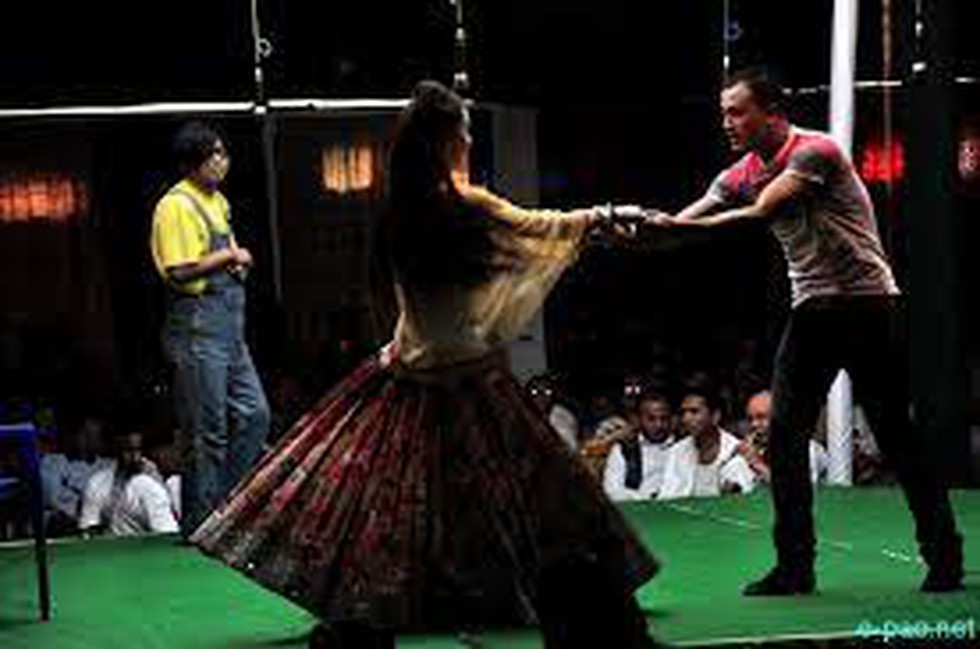
About Shumang Leela:
- It is a traditional form of theatre in Manipur.
- In this, the roles of female artists are all played by male actors and male characters are played by female artists in the case of female theatre groups.
- It was started as a comic genre for royalty and has evolved into a powerful medium for mass education, entertainment, and relaxation.
- In this, the roles of women are all played by men, called Nupi Shabis.
- The tradition is believed to be descended from Lai Haraoba,a ritual of the Meitei community of Manipur.
- Purpose: The plays provide a vehicle for educating the public about social, political, and economic issues.
- Types - Shumang Leela is of two types
- Nupa Shumang Leela– It is Performed only by men
- Nupi Shumang Leela– It is Performed only by women
What is Lai Haraoba?
- Lai Haraoba is a religious festival celebrated by the Meitei people who are largely settled in and around Manipur.
- It is held at neighbourhood shrines dedicated to the local umanglai deities.
- It is observed in the months between February and May-June.
Prelims Pointers
Jan. 31, 2024

About Bharat 5G Portal:
- It is a comprehensive platform serving the interests of startups, industry and academia in quantum, 6G, IPR and 5G domains.
- It also features the Future Tech-Experts registration portal in collaboration with PANIIT USA, aimed to help and advise the Indian Telecom ecosystem to advance the goal of Atmanirbhar Bharat.
- It acts as a one-stop solution for all quantum, IPR, PoCs/Pilot, 5G and 6G-related works capturing academic R&D developments, industry standards, OEMs, startups/MSMEs, and subject matter experts.
- It aims to propel India's 5G capabilities and foster innovation, collaboration, and knowledge-sharing within the telecom sector.
Prelims Pointers
Jan. 31, 2024

About Lab-grown fish:
- It is merely a type of lab-grown — or cultivated/cultured — meat.
- Seafood without the sea is ‘grown’ in the same way as other cultivated meats are grown — without the need to raise and kill an animal.
- Process: Cultivated fish meat is produced by isolating specific cells from fish and growing them in a laboratory setting using media that is free of animal components.
- The final product is expected to replicate the flavour, texture, and nutritional qualities of ‘real’ fish meat.
- Role of Central Marine Fisheries Research Institute:
- It will focus on the genetic, biochemical, and analytical work related to the project.
- In its cell culture lab, it will carry out research on early cell line development of high-value marine fish species — a process that involves isolating and cultivating fish cells for further research and development.
- It will initially focus on developing cell-based meat of fish such as pomfret, kingfish, and seerfish.
- Recently, a number of countries have made great strides in this pioneering technology.
- Israel is the frontrunner, followed by Singapore, the United States and China.
Jan. 30, 2024
Prelims Pointers
Jan. 30, 2024
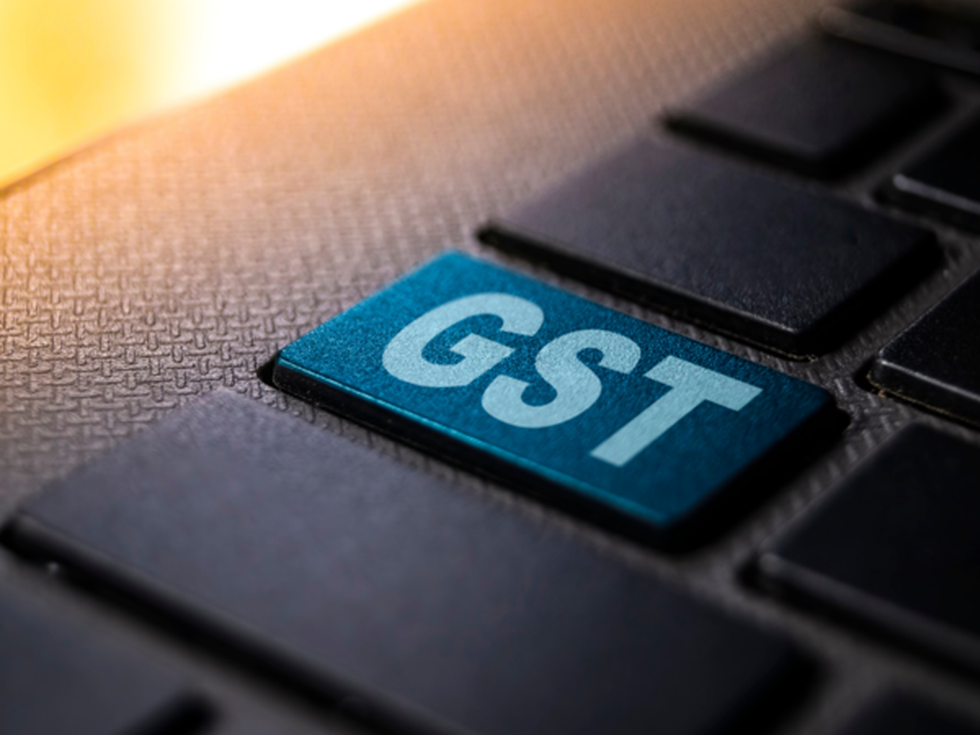
What is the meaning of anti-profiteering under GST?
- Any reduction in the GST rate or benefit of input tax credit should be passed on to the end consumer and not retained by the business. This is the basis of the anti-profiteering provisions under GST.
- Under anti-profiteering provisions, it’s illegal for a business to not pass on the benefits of the GST rate benefits to the end consumer, and thereby indulging in illegal profiteering.
- Who regulates anti-profiteering under the GST?
- The Anti-Profiteering Rules, 2017 (defined under Section 171 of the Central Goods and Services Tax Act 2017), prevents entities from making excessive profits due to the lowering of GST.
- The Government has created the National Anti-Profiteering Authority (NAA) to find and take action against taxable registered persons indulging in illegal profiteering.
- NAA has the power to determine the methodology and procedure for determining whether a taxable person is engaging in illegal profiteering.
- Reporting to the Anti-Profiteering Authority:
- Any interested party who has information to believe a taxable person is engaging in illegal profiteering from GST can refer the matter to the local screening committee.
- The State level Screening Committee shall examine the matter constituted by the State Governments consisting of officers of the State Government.
- If the screening committee determines that the information contains merit, the committee shall forward it with recommendations to the Standing Committee on Anti-Profiteering, which consists of officers of both the State Government and Central Government.
- If the Standing Committee contains enough proof to show that the taxable person engaged in illegal profiteering, then the committee shall refer to the Director General of Safeguards for a detailed investigation.
- Investigation by the Director General of Safeguards:
- All matters referred by the Standing Committee will be investigated by the Director General of Safeguards.
- The Director General of Safeguards will collect evidence, conduct an investigation, and issue notices to the interested parties. The notice must contain the following details:
- The description of the goods or services in respect of which the proceedings have been initiated.
- Summary of the statement of facts on which the allegations are based.
- The time limit allowed to the interested parties and other persons who may have information related to the proceedings for furnishing their reply.
- Once all the information and hearings are complete, the Director General of Safeguards will provide a report of findings.
- A report of findings must be submitted by the Director General of Safeguards, normally within 3 months or within 6 months if an extension is provided.
- Order under Anti-Profiteering Provisions: Once all the proceedings are completed and a report is obtained from the Director General of Safeguards, the Members of Committee will pass an order. An order from the Authority could mandate:
- Reduction in prices.
- Return to the recipient, an amount equivalent to the amount not passed on by way of a commensurate reduction in prices along with interest.
- Imposition of penalty as specified under the Act.
- Cancellation of GST registration.
Prelims Pointers
Jan. 30, 2024
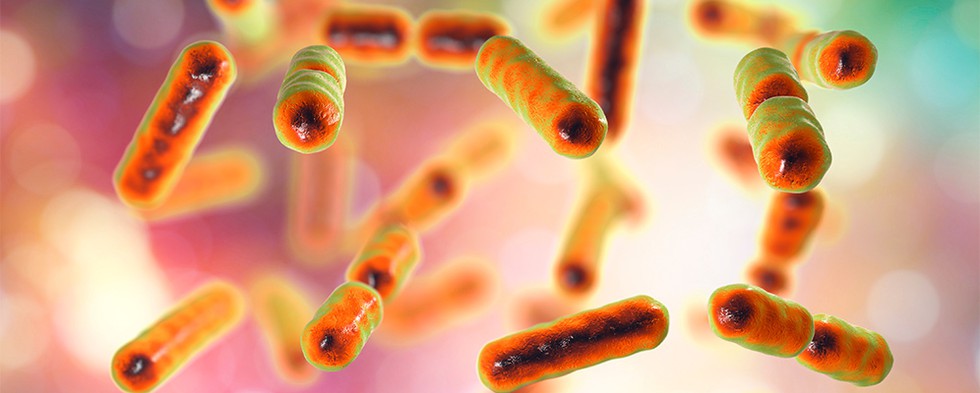
About Mitochondrial coxiella effector F (MceF):
- It is a bacterial protein capable of keeping human cells healthy even when the cells have a heavy bacterial burden.
- It is produced by Coxiella burnetii, a Gram-negative intracellular bacterium.
- After invading host cells, Coxiella burnetii releases MceF into cells.
- MceF interacts with glutathione peroxidase 4 (GPX4), an antioxidant enzyme located in the mitochondria, to improve mitochondrial function by promoting an anti-oxidizing effect that averts cell damage and death, which may occur when pathogens replicate inside mammalian cells.
Key Facts about Coxiella burnetii:
- It is a Gram-negative intracellular bacterium.
- It is the causative agent of a serious infection called Q fever, a zoonotic disease that can affect humans and animals.
- The bacterium is primarily transmitted to humans through the inhalation of contaminated aerosols from infected animals, particularly through the air-borne particles from placental tissues, urine, faeces, and milk of infected domestic animals like cattle, sheep, and goats.
- It causes atypical pneumonia in humans and coxiellosis in some animals, such as cattle, sheep, and goats.
- It is highly adapted to invade and control macrophages and monocytes–white blood cells that are part of the organism’s front-line immune defence–inhibiting the host’s responses to the infection.
- Unlike other bacteria, which cause disease only when they multiply to reach large numbers, a single C. burnetii is enough to make a healthy person sick.
Prelims Pointers
Jan. 30, 2024

About Generative AI:
- Generative AI, or generative artificial intelligence, is a form of artificial intelligence (AI) in which algorithms automatically produce content in the form of text, images, audio, and video.
- Unlike traditional AI systems that are designed to recognize patterns and make predictions, generative AI creates new content.
- Generative AI is powered by foundation models (large AI models) that can multi-task and perform out-of-the-box tasks, including summarization, Q&A, classification, and more.
- These systems have been trained on massive amounts of data.
- It works by using a Machine Learning (ML) model to learn the patterns and relationships in a dataset of human-created content. It then uses the learned patterns to generate new content.
- Typically, it starts with a simple text input, called a prompt, in which the user describes the output they want. Then, various algorithms generate new content according to what the prompt is asking for.
- Popular Generative AI Tools:
- ChatGPT: ChatGPT is an AI-powered chatbot developed by OpenAI, with a unique ability to not only generate written content but also converse with users fluently.
- Bard: Bard is a generative AI chatbot created by Google, based on LaMDA language model technology. It can answer questions asked by users or create new content from text or image prompts.
What is Machine Learning (ML)?
- It is defined as a discipline of artificial intelligence (AI) that provides machines with the ability to automatically learn from data and past experiences to identify patterns and make predictions with minimal human intervention.
- Machine learning methods enable computers to operate autonomously without explicit programming.
- ML applications are fed with new data and they can independently learn, grow, develop, and adapt.
- ML algorithms use computation methods to learn directly from data instead of relying on any predetermined equation that may serve as a model.
Prelims Pointers
Jan. 30, 2024

About INS Sumitra:
- It is the fourth and last Saryu-class patrol vessel of the Indian Navy.
- It is based on an indigenous design and constructed by Goa Shipyard Limited.
- It was commissioned in 2014 and is based in Chennai under the Eastern Naval Command.
- The primary role of the ship is to undertake surveillance of the country’s exclusive economic zone (EEZ) besides other operational tasks such as anti-piracy patrols, fleet support operations, maritime security of offshore assets, and escort operations.
- Features:
- Measuring about 105 metres in length, 13 metres in breadth, and displacing 2,200 tonnes, the ship can achieve a speed of 25 knots.
- The ship has a range of 6,500 nautical miles.
- It is propelled by two diesel engines.
- The ship’s weapon and sensor outfits include a 76.2 mm gun (super rapid gun mount), close-in weapon systems, and the latest navigational and early warning radars.
- It is capable of embarking one Dhruv/Chetak helicopter.
- It is also equipped with two rigid inflatable fast-motor boats.
Prelims Pointers
Jan. 30, 2024
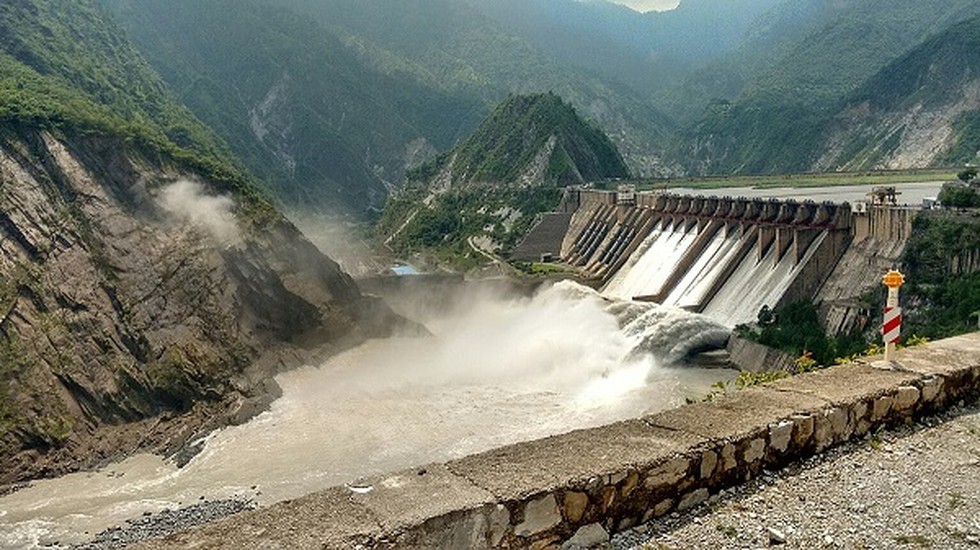
About Ratle Hydro Electric Project:
- It is an 850 MW run-of-river hydroelectric power project being built on the Chenab River in the Kishtwar District of Jammu and Kashmir.
- The project is being developed by Ratle Hydroelectric Power Corporation (RHPCL), which was formed as a joint venture (JV) between Jammu & Kashmir State Power Development Corporation (JKSPDC) and India’s state-owned National Hydroelectric Power Corporation (NHPC).
- The project comprises a 133-metre-tall and 194.8-meter-long concrete gravity dam, a diversion dam, and an underground powerhouse on the right bank of the river.
Key Facts about Chenab River:
- It is a major river of India and Pakistan.
- Origin: It is formed by the confluence of two streams, Chandra and Bhaga, at Tandi in the upper Himalayas in the Lahaul and Spiti Districts of Himachal Pradesh.
- In its upper reaches, it is also known as the Chandrabhaga.
- It is a tributary of the Indus River.
- Course:
- It flows west through Jammu and Kashmir union territory, between the steep cliffs of the Siwalik Range (south) and the Lesser Himalayas (north).
- Turning southwest, it continues into Pakistan, descending from the uplands into the broad alluvial lowlands of Punjab province.
- After receiving the Jhelum River near Trimmu, the Chenab empties into the Sutlej River, a tributary of the Indus River.
- Its total length is about 605 miles (974 km), and it feeds several irrigation canals.
- Tributaries: The tributaries of the Chenab River include Miyar Nalla, Sohal, Thirot, Bhut Nalla, Marusudar, and Lidrari.
Prelims Pointers
Jan. 30, 2024
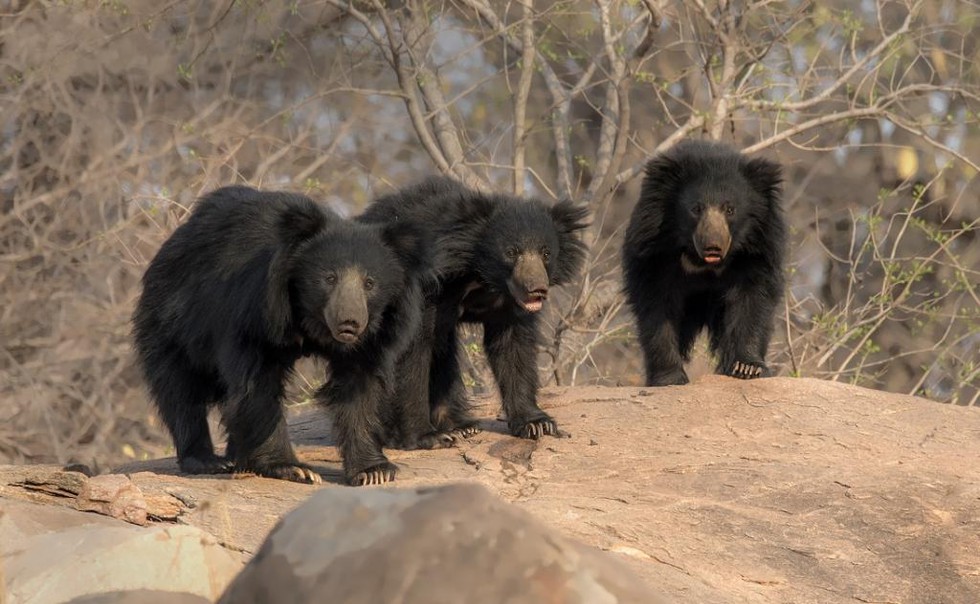
About Sloth bear:
- Scientific Name: Melursus ursinus
- Sloth bears are one of the eight bear speciesfound across the world.
- They are myrmecophagous, meaning, they find bugs and termites to be their most sought-after meal.
- Habitat: They live in a variety of dry and moist forestsand in some tall grasslands, where boulders, scattered shrubs and trees provide shelter.
- Appearance: They have long, shaggy dark brown or black fur and curved claws, which are the longest out of any of the bear species.
- Conservation Status
- IUCN: Vulnerable
- Wildlife Protection Act, 1972: Schedule 1
- Key to mitigate human-sloth bear confrontations: Enhancing habitat connectivity, minimising human-wildlife interaction zones, and implementing responsible waste management practices.
- Sloth Bear Sanctuaries in India: Daroji Sloth Bear Sanctuary (Karnataka), Jessore Sloth Bear Sanctuary (Gujarat).
Prelims Pointers
Jan. 30, 2024

About Exercise Sada Tanseeq:
- It is the inaugural edition of India-Saudi Arabia Joint Military Exercise ‘SADA TANSEEQ’ commenced at Mahajan, Rajasthan.
- The Exercise is scheduled to be conducted from 29th January to 10th February 2024.
- Aim of the Exercise is to train troops of both sides for Joint Operations in Semi Desert terrain under Chapter VII of the United Nations Charter.
- The Exercise will enable both the sides to share their best practices in the tactics, techniques and procedures of conducting operations in sub-conventional domains.
- It will facilitate developing interoperability, bonhomie and camaraderie between troops from both the sides.
- The Exercise will involve Establishment of Mobile Vehicle Check Post, Cordon & Search Operation, House Intervention Drill, Reflex Shooting, Slithering and Sniper Firing.
- The Exercise will provide an opportunity to both the contingents to strengthen their bond.
Prelims Pointers
Jan. 30, 2024
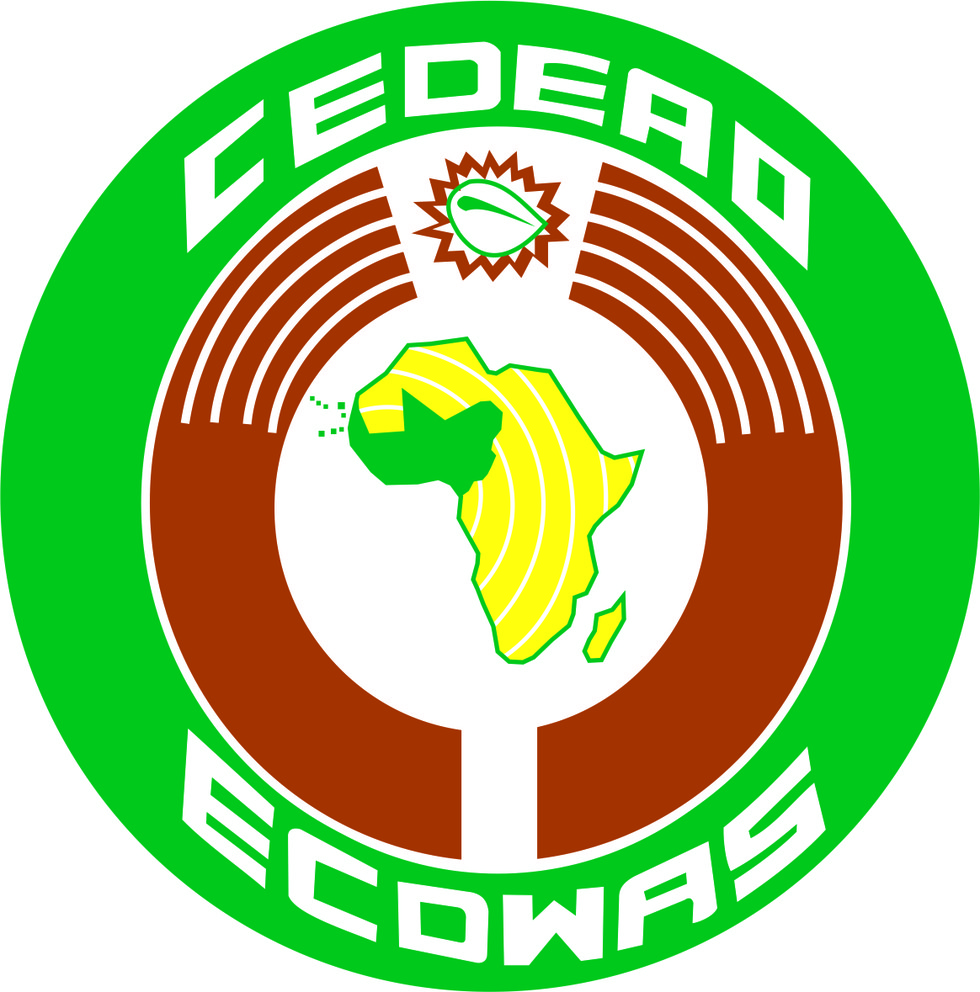
About Economic Community of West African States:
- It is also known as CEDEAO in French.
- It is the regional group which was established in 1975 through the Lagos Treaty.
- Mandate: Promoting economic integration among its members.
- The vision of ECOWAS is the creation of a “borderless region” that is well-integrated and governed in accordance with the principles of democracy, rule of law and good governance.
- Members: Benin, Cape Verde, Côte d’ Ivoire, The Gambia, Ghana, Guinea, Guinea Bissau, Liberia, Nigeria, Sierra Leone, Senegal and Togo.
- ECOWAS’ larger aims are to have a single common currency and create a single, large trading bloc in areas of industry, transport, telecommunications, energy, financial issues, and social and cultural matters.
- Along with the goals of economic cooperation, it has attempted to quell military conflicts in the region.
- It also operated a regional peacekeeping operation known as ECOMOG, led by Nigeria in the 1990s and early 2000s.
- Headquarters: Abuja, Nigeria.
Prelims Pointers
Jan. 30, 2024
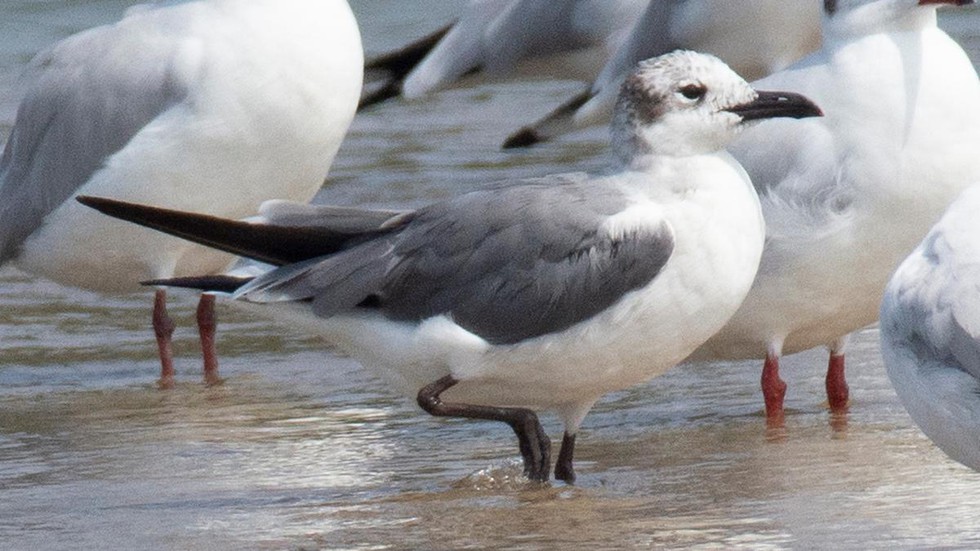
About Laughing gull:
- The bird is known for its unique laughter-like calls which resemble human laughter.
- Habitat: These are a coastal species and are only occasionally seen very far inland.
- Distribution: These birds are mainly found on the Atlantic coast of North America, the Caribbean, and northern South America.
- Diet: They are opportunistic carnivores and scavengers. They eat mainly fish, shellfish, crabs, molluscs, insects, bird eggs, and young birds.
- Features
- These are medium-sized gulls with fairly long wings and long legs that impart a graceful look when they are flying or walking. They have stout, fairly long bills.
- They take 2-3 years to gain adult plumage.
- Conservation Status
- IUCN: Least Concern
What is an estuary?
- An estuary is an area where a freshwater river or stream meets the ocean.
- When freshwater and seawater combine, the water becomes brackish, or slightly salty.
- Types of Estuaries
- Coastal plain estuaries: These are created when sea levels rise and fill in an existing river valley.
- Tectonic estuaries: It is formed due to the shifting together and rifting apart of the Earth's crust.
- Bar-built estuaries: When a lagoon or bay is protected from the ocean by a sandbar or barrier island, it is called a bar-built estuary.
- Fjord estuaries: These are a type of estuary created by glaciers. Fjord estuaries occur when glaciers carve out a deep, steep valley.
Prelims Pointers
Jan. 30, 2024

About E-Ink displays:
- These are a special type of screen technology often used in e-readers like the Amazon Kindle.
- The technology was originally developed in the 1990s at MIT and is now owned by E Ink Corporation.
- Working:
- The screens work using tiny microcapsules filled with positively charged white particles and negatively charged black ones suspended in fluid inside the display.
- By applying positive or negative electrical charges to different areas of the screen, the white or black particles can be made to rise to the surface, creating the text and images on the display.
- Unlike LCD and LED displays that use a backlight, E Ink displays reflect light – just like paper. This makes them easier on the eyes for long reading sessions.
- They also require very little power since they don’t need a backlight and only use energy when the image changes.
- The lack of backlighting also means that they are easier to read under brighter lighting conditions, which isn’t the case with LCD/LED displays at all – legibility actually takes a hit under bright sunlight.
- Advantages:
- They consume very little power compared to LCD and OLED displays. An E Ink display only draws power when the image is changed, meaning it can display a static image for weeks or months without needing a charge.
- They cause less eye strain for the user.
- Disadvantages:
- It has a slow refresh rate compared to LCD and OLED displays, making them unsuitable for video or animation.
- It has limitations on colour and resolution compared to other display technologies.
- The niche nature of E-Ink manufacturing means the displays remain expensive, especially in larger sizes.
- Other applications: It is used in bus stop displays and walking direction signs and restaurants menu boards etc.
Jan. 29, 2024
Prelims Pointers
Jan. 29, 2024
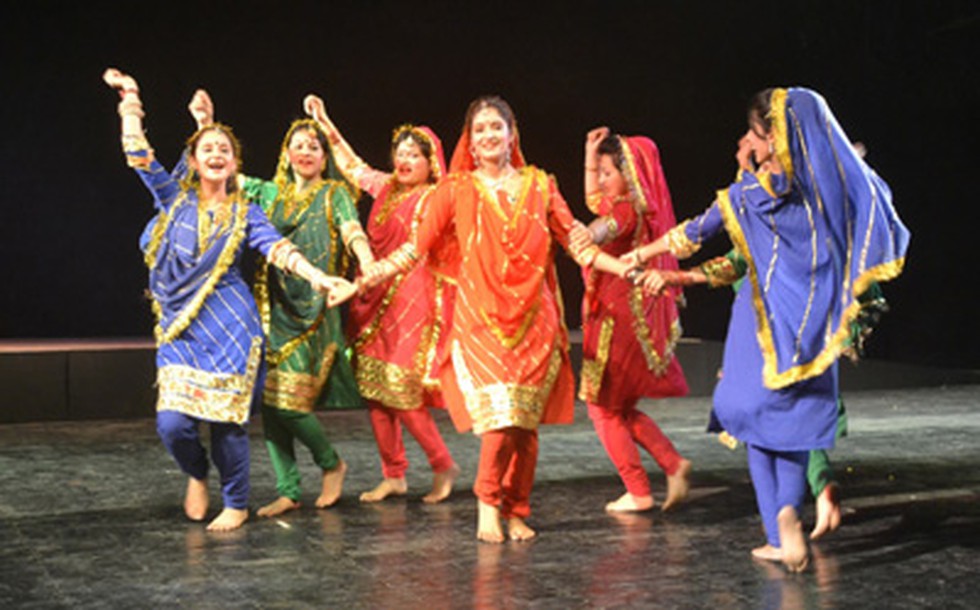
About Dogri folk dance:
- It is a dance performed in Duggar region of Jammu.
- It is generally performed by a group of artists whose main leader sings the song as well as dances while others are in the sitting position providing beats of Drums and Chimta.
- It is performed in functions and social gatherings.
- There are other varieties of this dance with the men and women or only women performing dance in groups to the music of some famous folk song in colourful traditional dresses.
- Dogra folk-dances have an important role as a part of worship, ceremonies and a pastime but the main force behind the folk-dances is the celebratory mood.
- Other dance forms of Jammu region: Dheku, Phummani, jagran, Ckauki, Chhajja, Kuddha, Hirana etc. are the main dances. Bhagtan, Raas , Chandrauli etc. are main folk-drama styles.
Prelims Pointers
Jan. 29, 2024
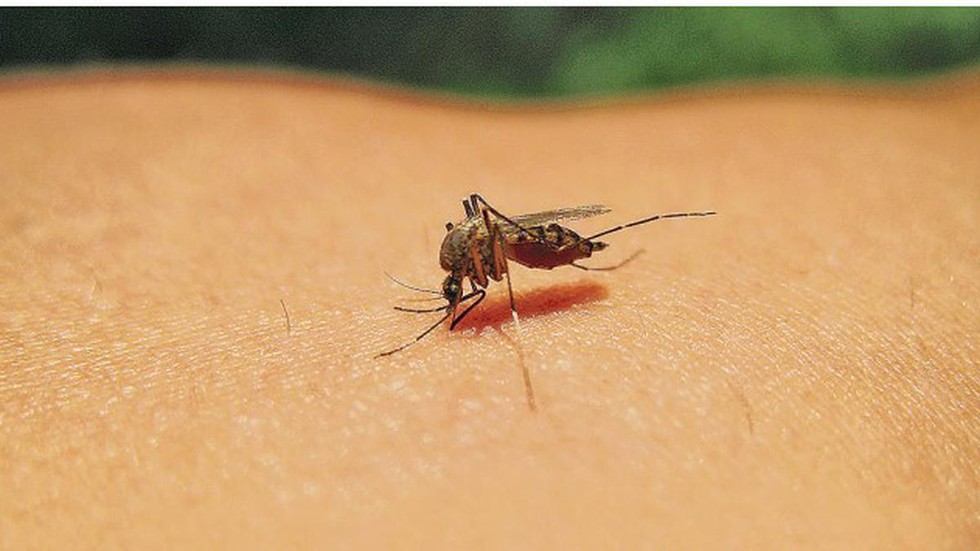
About Western Equine Encephalitis Virus:
- It is a mosquito-borne infection caused by the Western Equine Encephalitis Virus (WEEV), which belongs to the Togaviridae family of viruses.
- The virus has an approximately 11.5 kilobases long single-stranded RNA genome.
- It is a recombinant of the eastern equine encephalitis virus (EEEV) and a Sindbis-like virus.
- Passerine birds are thought to be the reservoir and equine species as intermediate hosts.
- The primary mode of transmission of the infection to humans is through mosquitoes which act as vectors for the virus.
- Symptoms:
- While most of the infections are asymptomatic, the infection may lead to severe consequences in rare cases.
- An estimated 4-5% of cases may manifest as infection/inflammation of the brain, resulting in neurological symptoms and sequelae of disease.
- Treatment: With no specific antiviral treatment, symptomatic care is crucial, especially for neurologic symptoms.
Prelims Pointers
Jan. 29, 2024
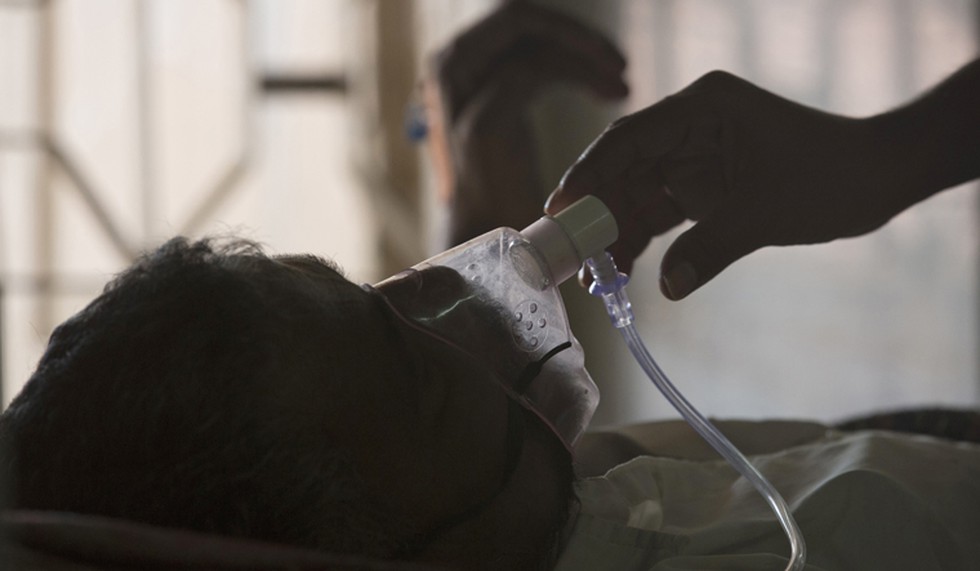
About Nitrogen hypoxia:
- Hypoxia is a medical term for a state of insufficient oxygen in the body.
- Nitrogen hypoxia is a process where pure nitrogen gas, or nitrogen gas at concentrations high enough to be lethal, is inhaled to the point of causing asphyxiation.
- It is a relatively new alternative to more common forms of capital punishment, like lethal injection and electrocution.
- In this method of execution, a respirator mask is placed over the inmate's face, and pure nitrogen is pumped into the person's lungs instead of oxygen.
- It leads to unconsciousness and then death from lack of oxygen.
Key facts about Nitrogen
- It appears as a colourless odourless gas.
- It makes up the major portion of the atmosphere.
- It is important for plant growth and can be ‘fixed’ by lightning or added to soils in fertilisers.
- It is important to the chemical industry. It is used to make fertilisers, nitric acid, nylon, dyes and explosives.
- Nitrogen gas is also used to provide an unreactive atmosphere. It is used in this way to preserve foods and in the electronics industry during the production of transistors and diodes.
- Large quantities of nitrogen are used in annealing stainless steel and other steel mill products. Annealing is a heat treatment that makes steel easier to work.
- Liquid nitrogen is often used as a refrigerant. It is also used to rapidly freeze foods, helping them to maintain moisture, colour, flavour and texture.
Prelims Pointers
Jan. 29, 2024
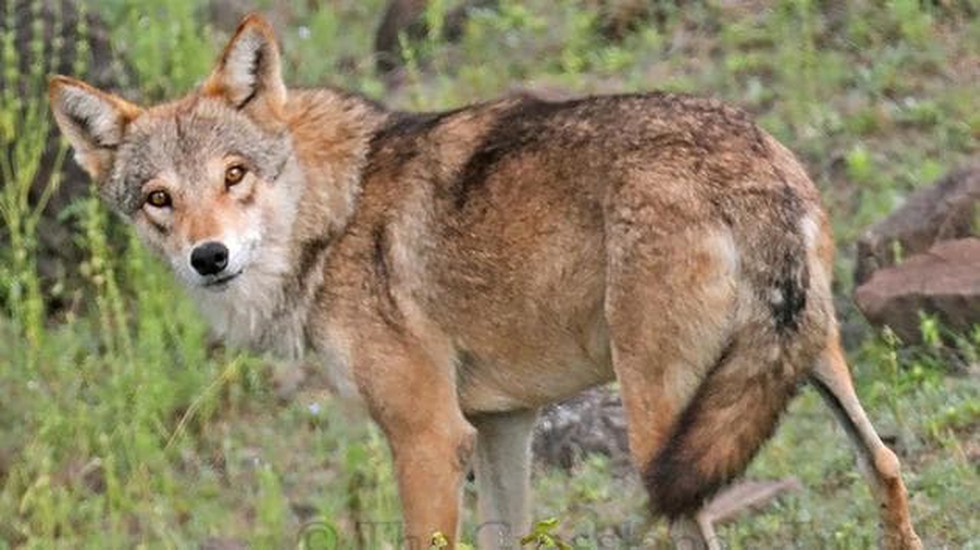
About the Indian Grey wolf:
- Scientific Name: Canis lupus pallipes
- It is a subspecies of grey wolf that ranges from Southwest Asia to the Indian Subcontinent.
- They live in warmer conditions.
- It travels in smaller packs and is less vocal than other variants. They are nocturnal and hunt from dusk to dawn.
- Description: It is of intermediate in size lies between the Tibetan and Arabian wolf, and lacks the former’s luxuriant winter coat due to its living in warmer conditions.
- Habitat: The Indian wolf inhabits areas dominated by scrub, grasslands and semi-arid pastoral agro-ecosystems.
- Distribution: It has a wide distribution range that extends from the Indian subcontinent to Israel. There are about 3,000 animals in India, some in captivity.
- Conservation Status
- IUCN: Least concern
- Wildlife (Protection) Act of 1972 : Schedule I
- CITES : Appendix 1
- Threat: Habitat loss and depletion of prey species etc.
Prelims Pointers
Jan. 29, 2024
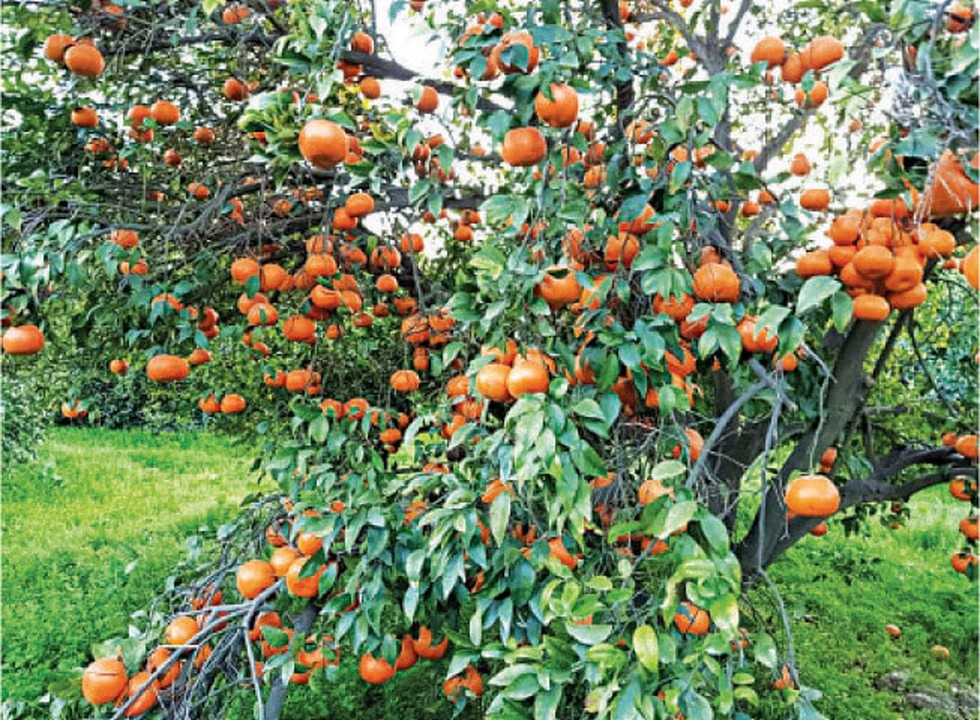
About Kinnow Farming:
- Kinnow / Mandarin, commonly pronounced as Kinoo or Kinu is a citrus fruit.
- It is a largely cultivated fruit of North India, and Punjab holds the major share of Kinnow / Mandarin producing area of the country, with other states including Rajasthan, Haryana, Madhya Pradesh, Himachal Pradesh, Jammu, and Kashmir.
- It is a hybrid of two varieties Citrus nobilis and Citrus deliciosa.
- It is commonly confused with Oranges, due to the similarity in their appearances, seasonal availability and nutritional benefits offered by both the fruits.
- It comprises a high amount of juice content, making them ideal for extracting juice and pulp.
- Climatic conditions
- Temperature: It can be grown successfully in a temperature range of 10-35°C.
- It has the ability to withstand soaring temperatures as high as 40°C during summer and 0°C during winter.
- Soil: Sites having well drained clay-loam soils with 6.0-7.5 pH are ideal for its cultivation.
- Rain: 300-400mm
Prelims Pointers
Jan. 29, 2024

About Alpenglow:
- It is a natural phenomenon when mountain slopes are illuminated by the sun as it rises or sets.
- The slopes turn a rosy, reddish, or orange hue depending on the angle of the sun and atmospheric conditions.
- It occurs during the twilight hours before or after sunset. It can also occur in the first minutes after the sun rises or sets.
- Alpenglow typically occurs in the range of colours between red, pink, and orange.
- This is because these are the longest warm rays of electromagnetic waves (light) — they reach various surfaces, while cold rays are shorter and disappear faster in the atmosphere.
- Its vibrancy and colour depend on the location of the sun, the angle of the light, and other atmospheric conditions like clouds, humidity, and particulates.
- It can change quickly depending on how fast the sun sets on any given day.
Prelims Pointers
Jan. 29, 2024
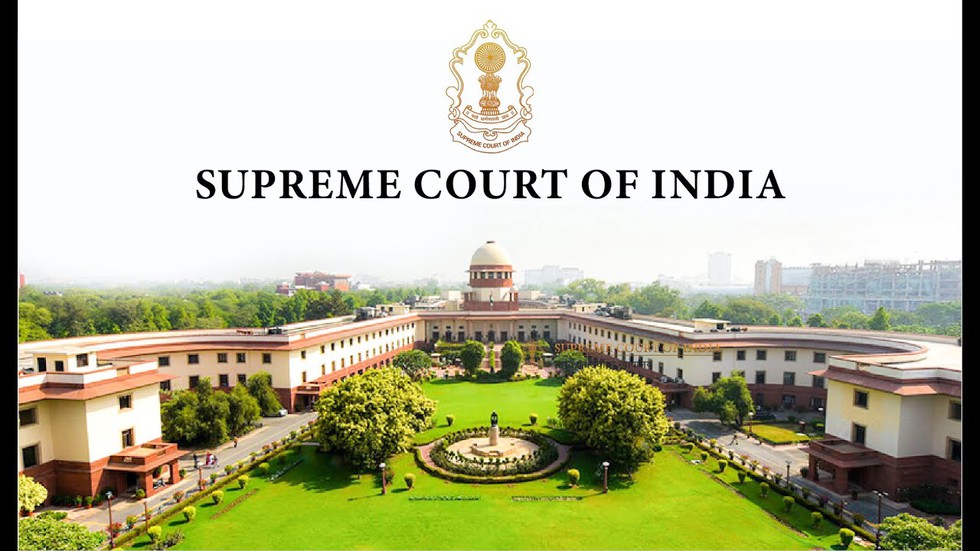
About Supreme Court of India (SC):
- History:
- The Supreme Court of India is the apex judicial body under the Constitution of India.
- Article 124 of the Constitution states that “There shall be a Supreme Court of India.”
- The Supreme Court came into existence on January 26, 1950, with the coming into force of the Constitution.
- On January, 28, 1950, two days after India became a Sovereign Democratic Republic, the Supreme Court was inaugurated.
- The Supreme Court initially functioned from the old Parliament House till it moved to the present building located on Tilak Marg, New Delhi, in 1958.
- The first President of India, Dr. Rajendra Prasad, inaugurated the present building of the Supreme Court of India on August 4, 1958.
- Number of Judges:
- The original Constitution of 1950 envisaged a Supreme Court with a Chief Justice and 7 puisne Judges, leaving it to Parliament to increase this number.
- Considering the increase in workload, Parliament increased the number of Judges from 8 in 1950 to 11 in 1956, 14 in 1960, 18 in 1978, 26 in 1986, 31 in 2009, and 34 in 2019 (current strength).
- Today, the judges sit in benches of two and three and come together in larger benches of 5 and more (Constitution Bench) to decide any conflicting decisions between benches of the Supreme Court or any substantial questions concerning the interpretation of the Constitution.
- The proceedings of the Supreme Court are conducted in English.
- Powers and Functions:
- The Supreme Court has original, appellate, and advisory jurisdiction.
- It serves both as the final court of appeals and the final interpreter of the Constitution.
- Its exclusive original jurisdiction extends to any dispute between the Government of India and one or more States or between the Government of India and any State or States on one side and one or more States on the other, or between two or more States, if and insofar as the dispute involves any question (whether of law or fact) on which the existence or extent of a legal right depends.
- In addition, Article 32 of the Constitution gives extensive original jurisdiction to the Supreme Court for the enforcement of Fundamental Rights.
- It is empowered to issue directions, orders, or writs, including writs in the nature of habeas corpus, mandamus, prohibition, quo warranto, and certiorari, to enforce them.
- The Supreme Court has been conferred with the power to direct the transfer of any civil or criminal case from one High Court to another High Court or from a Court subordinate to another High Court.
- Under the Arbitration and Conciliation Act, 1996, International Commercial Arbitration can also be initiated in the Supreme Court.
- The appellate jurisdiction of the Supreme Court can be invoked by a certificate granted by the High Court concerned under Article 132(1), 133(1) or 134 of the Constitution in respect of any judgement, decree, or final order of a High Court in both civil and criminal cases, involving substantial question of law as to the interpretation of the Constitution.
- Appeals also lie to the Supreme Court in civil matters if the High Court concerned certifies:
- that the case involves a substantial question of law of general importance, and
- that, in the opinion of the High Court, the said question needs to be decided by the Supreme Court.
- In criminal cases, an appeal lies to the Supreme Court if the High Court
- has on appeal reversed an order of acquittal of an accused person and sentenced him to death or to imprisonment for life or for a period of not less than 10 years, or
- has withdrawn for trial before itself any case from any Court subordinate to its authority and has in such trial convicted the accused and sentenced him to death or to imprisonment for life or for a period of not less than 10 years, or
- certified that the case is a fit one for appeal to the Supreme Court.
- Parliament is authorised to confer on the Supreme Court any further powers to entertain and hear appeals from any judgement, final order or sentence in a criminal proceeding of a High Court.
- The Supreme Court also has a very wide appellate jurisdiction over all Courts and Tribunals in India in as much as it may, in its discretion, grant special leave to appeal under Article 136 of the Constitution from any judgement, decree, determination, sentence or order in any cause or matter passed or made by any Court or Tribunal in the territory of India.
- The Supreme Court has special advisory jurisdiction in matters which may specifically be referred to it by the President of India under Article 143 of the Constitution.
- Election Petitions under Part III of the Presidential and Vice-Presidential Elections Act, 1952, are also filed directly in the Supreme Court.
- Under Articles 129 and 142 of the Constitution, the Supreme Court has been vested with power to punish for contempt of Court, including the power to punish for contempt of itself.
- The Supreme Court can reconsider its final judgement or order by way of a curative petition on limited grounds after the dismissal of the review petition.
- As the highest court in India, the Supreme Court’s judgments are binding on all other courts in the country.
Prelims Pointers
Jan. 29, 2024
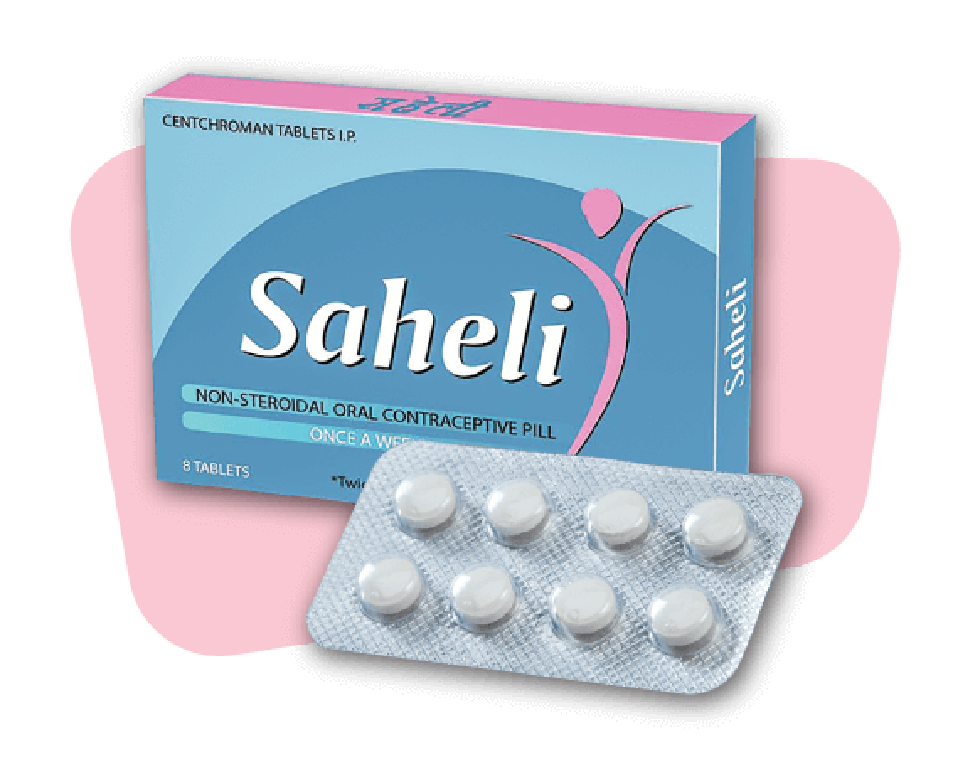
About Saheli:
- Saheli is the world’s first and only oral non-steroidal contraceptive pill.
- ‘Saheli’, aka Centchroman (ormeloxifene 30mg), is the only non–steroidal pill with zero side effects available in the world.
- The pill, launched by HLL in 1991, is free from side effects like weight gain, nausea, vomiting and headaches as it contains the molecule Centchroman (ormeloxifene) as the active ingredient.
- All common brands of oral contraceptive pills contain hormones like oestrogen or progesterone, or a combination of both; only Saheli is free of these steroids and hence has no side effects.
- This drug was included in the National Family Welfare Programme in 1995.
Oestrogen and Progesterone:
- Oestrogen (also called 'estrogen') and progesterone are hormones that are important for sexual and reproductive development in women.
- Production:
- The ovaries are a pair of ova-producing organs (that is, they produce egg cells) that maintain the health of the female reproductive system.
- In addition to their role in producing ova, the ovaries also have the distinction of being an endocrine gland because they secrete hormones—primarily estrogen and progesterone.
- They are both important for the menstrual cycle and maintenance of pregnancy in females and are combinedly prescribed in birth control pills and hormone replacement therapy for menopause.
- While they are often thought of as ‘female hormones’, oestrogen and progesterone are also found in men.
Prelims Pointers
Jan. 29, 2024
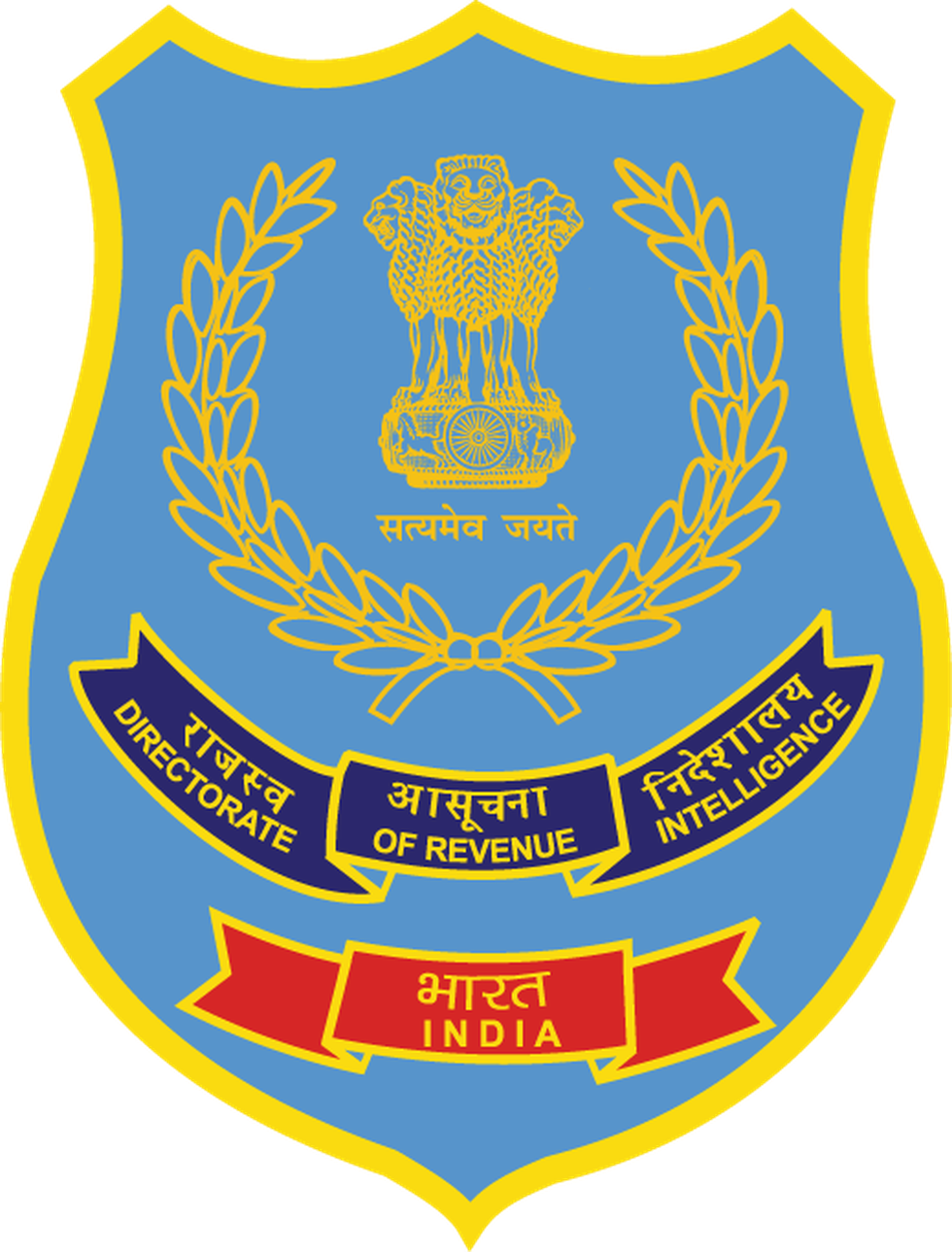
About Directorate of Revenue Intelligence (DRI):
- It is the premier intelligence and enforcement agency of the Government of India on anti-smuggling matters.
- It works under the Central Board of Indirect Taxes and Customs, Ministry of Finance, Government of India.
- It came into existence on December 4, 1957.
- Functions:
- Collection of intelligence about smuggling of contraband goods, narcotics, under-invoicing, etc. through sources in India and abroad, including secret sources.
- Analysis and dissemination of such intelligence to the field formations for action and working on such intelligence, where necessary.
- Keeping watch over important seizures and investigation cases. Associating with or taking over the investigations which warrant specialised handling by the Directorate.
- Guiding important investigation/prosecution cases. Keeping liaison with foreign countries, Indian Missions, and Enforcement agencies abroad on anti-smuggling matters.
- To keep in liaison with C.B.I. and through them with the To refer cases registered under the Customs Act to the Income Tax Department for action under the Income Tax Act.
- To keep statistics of seizures, and prices/rates etc. for watching trends of smuggling and supply required material to the Ministry of Finance and other Ministries.
- To study and suggest remedies for loopholes in law and procedures to combat smuggling.
- The DRI, with its Headquarters in New Delhi, has 12 zonal units, 35 regional units, and 15 sub-regional units.
Prelims Pointers
Jan. 29, 2024
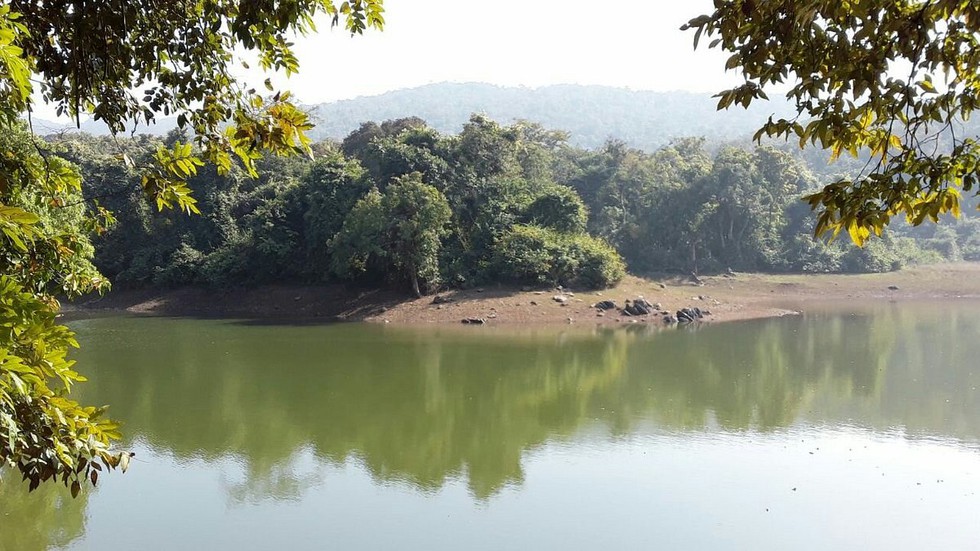
About Dalma Wildlife Sanctuary:
- Location:
- It is located 10 kilometres from the city of Jamshedpur in the state of Jharkhand.
- It is situated around the Dalma Hills on the Chota Nagpur Plateau.
- The Sanctuary gets its name from the "Dalma mai" a local goddess who is revered and worshipped by the local people and the people of adjoining villages of Dalma.
- Inaugurated in 1975, it contains a significant population of Indian Elephants.
- The sanctuary covers almost 193 sq. km. of forest area.
- The entire forest of Dalma Sanctuary falls in the catchment of the Subarnarekha River and Dimna Lake of Jamshedpur.
- Vegetation: The forests of Dalma come under the category "Dry peninsular Sal" and "Northern dry mixed deciduous Forest".
- Flora: Medicinal plants like Ananatmula, Satawari, Sarpagandha, etc. are abundant in the sanctuary. Various types of trees, climbers, herbs, shrubs, and orchids are found here.
- Fauna:
- Besides elephants, the sanctuary has a considerable population of other wildlife like barking deer, wild boar, giant squirrel, porcupine, pangolin, sloth bear, etc.
- Commonly seen birds in the sanctuary are falcons, golden orioles, Indian tree pie, paradise fly catchers, grey hornbills, Indian peafowl, etc.
Jan. 28, 2024
Prelims Pointers
Jan. 28, 2024
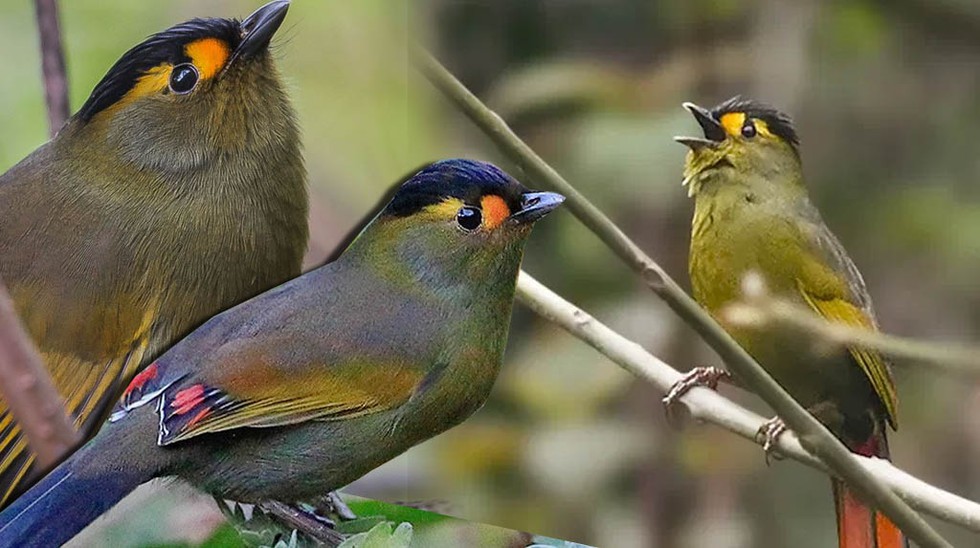
About Singchung Bugun Village Community Reserve:
- It is a 17-square-kilometre biodiversity hotspot located in Arunachal Pradesh, around 40 km from the famous Eagle nest Wildlife Sanctuary.
- The reserve was created in 2017 to protect biodiversity in the region.
- It is home to critically endangered species such as the passerine bird Bugun Liocichla (Liocichlabugunorum), which is named after the Buguns community.
- It was one of the first bird species to be discovered in India since the country’s independence in 1947, and it lives only on the Buguns’ community lands.
- The Buguns are an indigenous community with a population of about 2,000 people, spread across 12 villages that are dotted outside the forests of Eagle nest Wildlife Sanctuary.
What is a Community Reserve?
- Conservation reserves and community reserves in India are terms denoting protected areas of India which typically act as buffer zones, connectors, and migration corridors between established national parks, wildlife sanctuaries and reserved and protected forests in India.
- Such areas are designated as conservation reserves if they are uninhabited and completely owned by the Government of India but used for subsistence by communities, and community reserves if part of the land is privately owned.
- These protected area categories were first introduced in the Wildlife (Protection) Amendment Act of 2002, an amendment to the Wildlife Protection Act (WLPA) of 1972.
- These categories were added because of reduced protection in and around existing or proposed protected areas due to private ownership of land, and land use.
- The provisions of the WLPA apply to an area once it has been declared a community reserve.
Prelims Pointers
Jan. 28, 2024
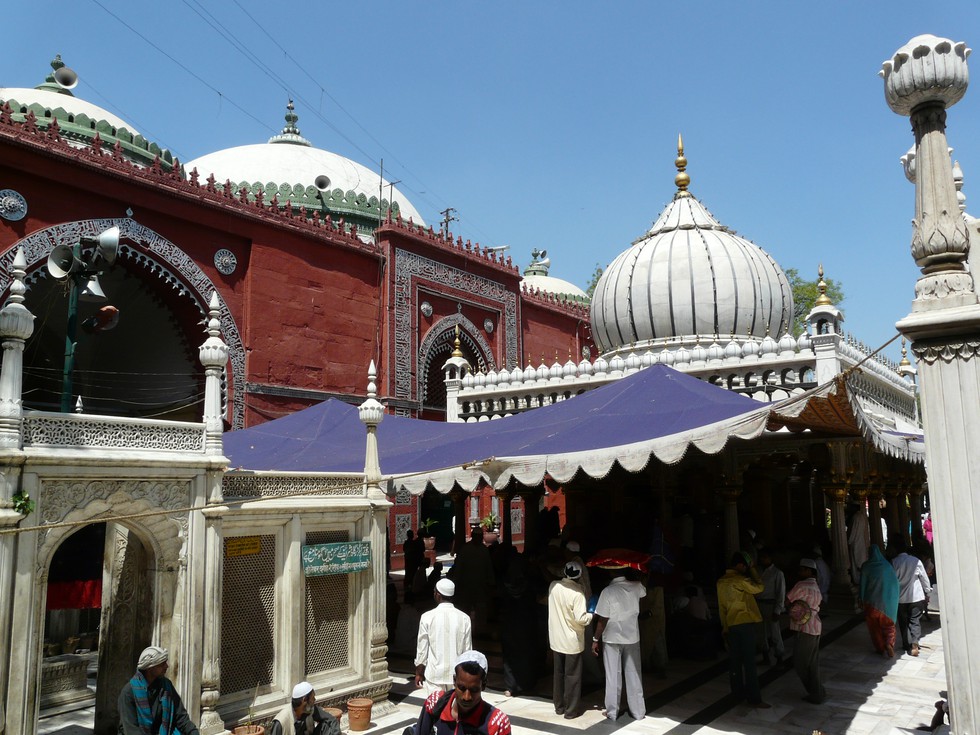
About Hazrat Nizamuddin Aulia Dargah:
- It is located in Delhi's Nizamuddin West area.
- It is the mausoleum of the famous Sufi saint, Nizamuddin Auliya (1238-1325 CE).
- It was built in the 14th Century C.E.
- Features:
- It consists of a square chamber surrounded by verandas, which are pierced by arched openings.
- The dome is ornamented by vertical stripes of black marble and is crowned by a lotus-cresting.
- Inside the dargah complex, one can find the tombs of Nizamuddin Auliya's saints: Jahanara Begum, Shah Jahan’s favourite daughter, and poet Amir Khusru.
- Towards the north side of Dargah, there is a stepwell.
- On the north-eastern side, there is a 16th-century tomb of Atgah Khan, who was a powerful minister in Emperor Akbar’s court.
- The site is also known for its evening qawwali devotional music sessions.
Who was Nizamuddin Auliya?
- Syed Muhammad Nizamuddin Auliya was one of the most famous Sufi saints from the Indian subcontinent region.
- Also known as Hazrat Nizamuddin and Mahbub-e-Ilahi (Beloved of God), he was a Sunni Muslim scholar and Sufi saint of the Chishti Order.
- Like most of the Chishti Sufi saints, Nizamuddin Auliya stressed love as a means of realising God. He believed the love of God implied a love of humanity.
- Some of the famous disciples of Nizamuddin include Shaikh Nasiruddin Chirag Delhavi, Amir Khusro, and the royal poet of the Delhi Sultanate.
Prelims Pointers
Jan. 28, 2024

About All India Survey on Higher Education (AISHE):
- The AISHE report has been published by the Ministry of Education since 2011.
- Aim: To portray the status of higher education in the country.
- The survey covers all the institutions in the country engaged in imparting higher education.
- Data is being collected on several parameters, such as teachers, student enrolment, programmes, examination results, education finance, and infrastructure.
- Indicators of educational development such as Institution Density, Gross Enrolment Ratio, Pupil-teacher ratio, Gender Parity Index, Per Student Expenditure will also be calculated from the data collected through AISHE.
- For the purpose of this survey, Higher Education is defined as education that is obtained after completing 12 years of schooling or equivalent.
- Highlights of AISHE 2021-22:
- In 2021-22, the overall gross enrolment ratio (GER) in higher education for the age group 18-23 years increased to 28.4%, from 27.3%in 2020- 21 and 23.7% in 2014- 15, the base year.
- Female GER increased to 28.5% (2.07 crore) in 2021-22 from 27.9 (2.01 crore) in 2020-21 and 22.9 percent in 2014-15.
- The GER of Schedule Caste (SC) and Schedule Tribe (ST) students has also increased by around 2%. In 2020-21, the GER of SC students was 25.6% and ST was 23.4%, while in 2021-22 it increased to 27.2% and 25.8% respectively.
- The enrolment of OBC students has also increased to 1.63 crore in 2021-22 from 1.13 crore in 2014-15.
- About 78.9 per cent of the total students are enrolled in undergraduate level courses and 12.1 per cent are enrolled in postgraduate level courses.
- Among disciplines at the undergraduate-level in AISHE 2021-22, enrolment is highest in Arts (34.2%), followed by science (14.8%), Commerce (13.3%), and Engineering and Technology (11.8%).
- Among streams at postgraduate-level in AISHE 2021-22, maximum students are enrolled in Social Science (21.1%), followed by science (14.7).
- Government Universities constituting 58.6% of total Universities, contribute 73.7% of total enrolment, and Private Universities account for 26.3% of total enrolment.
- The total number of Universities / University level institutions registered is 1,168, Colleges 45,473 and Standalone Institutions 12,002.
- As per the survey, the total number of faculty/teachers in 2021-22 is 15.98 lakh, of which about 56.6% are male and 43.4% are female.
Prelims Pointers
Jan. 28, 2024
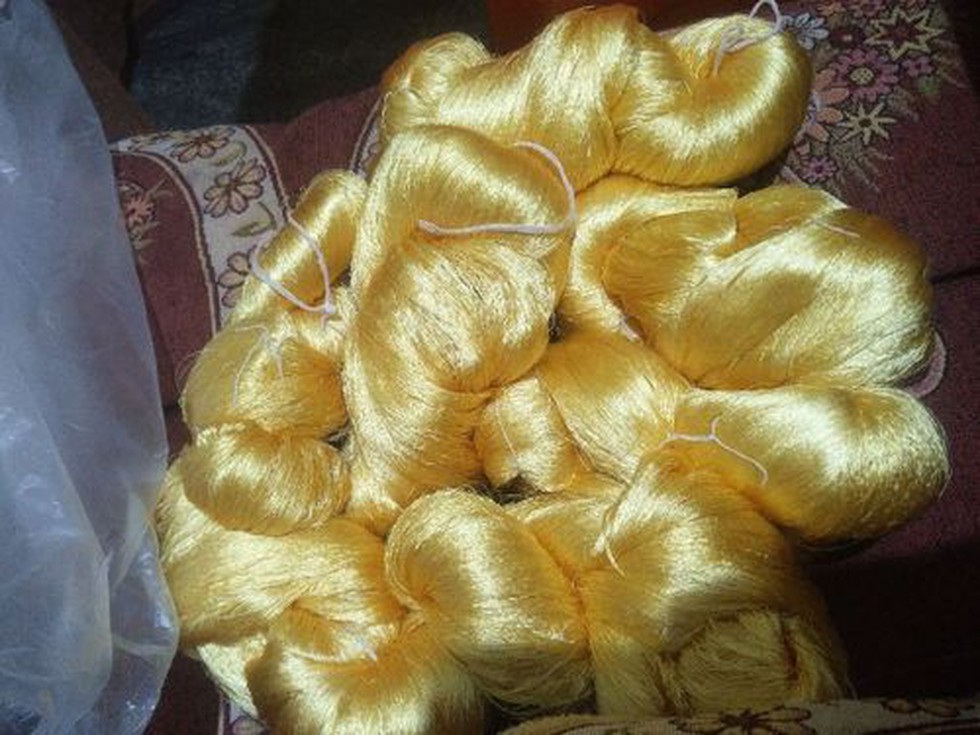
About Tasar Silk:
- It is a type of wild silk, which is made from silkworms that feed on plants like Asan and Arjun.
- People from different parts of India call it tusaar, tusser, tushar, tusa, tassore, and tasar etc.
- Producers:
- Globally, it is produced in China, Sri Lanka, and Bangladesh.
- India is the second-largest producer of tussar silk and the exclusive producer of Indian tussar (also known as tropical tussar), which is largely tended to by tribals.
- In India, it is primarily produced in Madhya Pradesh, Jharkhand, and Chhattisgarh. Currently, Jharkhand is one of the largest producers.
- Features:
- It is famous and valued for its natural golden colour. The silk can also be found in shades of brown, cream, and orange.
- The colour is caused by the production process due to the presence of carotenoids in the silk.
- It is known for its distinctive texture, which is often described as being 'rough' or 'crinkly.'
- This is due to the fact that the fibres of tasar silk are shorter than those of other silks, such as mulberry silk.
- As a result, tasar silk fabrics are less smooth and have a more uneven surface.
- Tasar silk fabrics have a characteristic weave that is different from other types of silk.
- The threads of tasar silk are often thicker than those of other silks, and they are woven in a way that creates a 'checkerboard' pattern.
- It is lightweight yet surprisingly strong, with a luxuriously soft feel often compared to that of cashmere or velvet.
- It does not retain moisture, and this quality makes it a delight to wear in warmer climates of the world.
- Tasar silk is more porous, which makes it more wearable.
- It is famous and valued for its natural golden colour. The silk can also be found in shades of brown, cream, and orange.
Prelims Pointers
Jan. 28, 2024
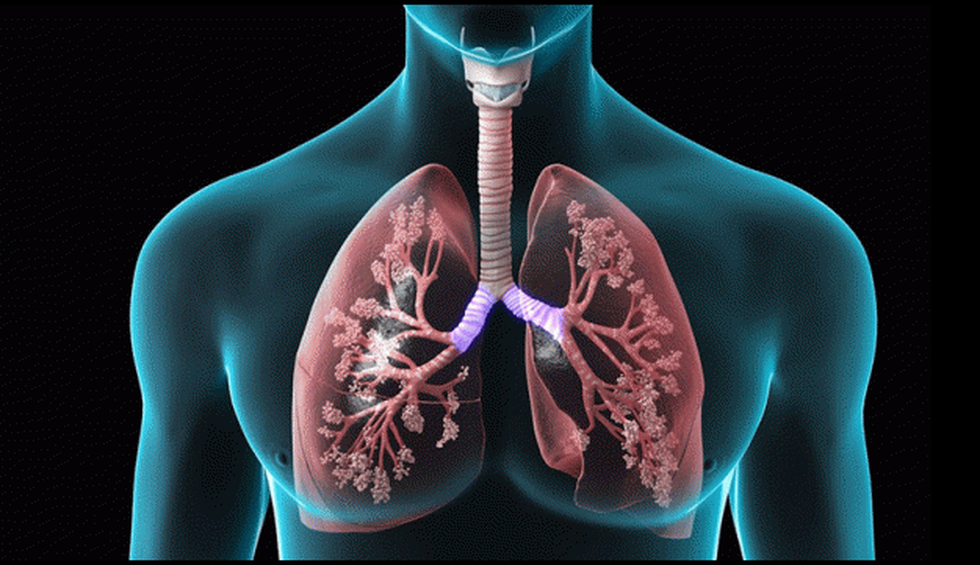
About Chronic Obstructive Pulmonary Disease (COPD):
- It is a chronic inflammatory lung disease that causes obstructed airflow from the lungs.
- There are two main forms of COPD:
- Chronic bronchitis, which involves a long-term cough with mucus.
- Emphysema, which involves damage to the lungs over time.
- Most people with COPD have a combination of both conditions.
- Causes:
- It's typically caused by long-term exposure to irritating gases or particulate matter, most often from cigarette smoke.
- Tobacco smoking accounts for over 70% of COPD cases in high-income countries. In low- and middle-income countries (LMIC), tobacco smoking accounts for 30–40% of COPD cases, and household air pollution is a major risk factor.
- Signs and symptoms:
- The most common symptoms of COPD are difficulty breathing, chronic cough (sometimes with phlegm) and feeling tired.
- COPD symptoms can get worse quickly. These are called flare-ups. These usually last for a few days and often require additional medicine.
- People with COPD are at increased risk of developing heart disease, lung cancer, and a variety of other conditions.
- Treatment:
- COPD isn’t curable, but it can get better by not smoking, avoiding air pollution, and getting vaccines.
- It can be treated with medicines, oxygen, and pulmonary rehabilitation.
Prelims Pointers
Jan. 28, 2024
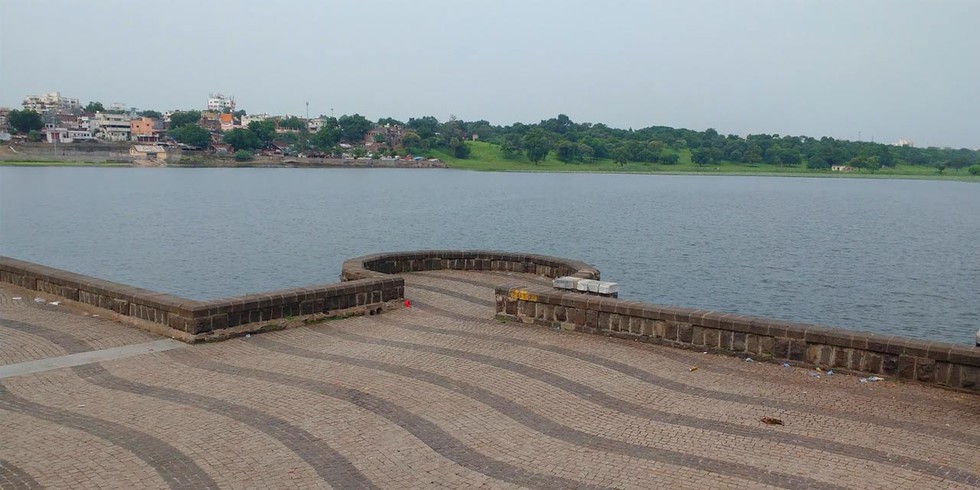
About Futala Lake:
- Futala Lake, also known as Telankhedi Lake, is located in the western part of Nagpur, Maharashtra.
- It is believed to be more than 200 years old.
- It is spread over 60 acres.
- Built by the Bhonsle kings of Nagpur, this lake is known for its colourful fountains.
- The lake is surrounded on three sides by forest and a landscaped beach on the fourth side.
Key Facts about Bhonsle Dynasty:
- The Bhonsle or Bhonsale (pronounced Bhoslay) were a prominent Maratha clan who served as rulers of several states in India.
- Raghuji Bhonsle of Berar founded the dynasty in 1730. The most prominent member of the clan was Shivaji, the founder of the Maratha empire.
- His successors ruled as maharajas from their capital at Satara, although "de facto'' rule of the empire passed to the Peshwas, the Marathas' hereditary chief ministers, during the reign of Shahu I.
- In addition to the Bhonsle Maharajas of Satara, rulers of the Bhonsle clan established themselves at Thanjavur in Tamil Nadu in the 17th century, and at Nagpur and Kolhapur in modern-day Maharashtra in the 18th century.
- The Bhonsle of Thanjavur were descendants of Sivaji's half-brother Venkaji, while the Bhonsle of Nagpur and Kolhapur were descended from Sivaji's sons, Sambhaji and Rajaram.
- After the British defeat of the Marathas in the third Anglo-Maratha War in 1818, the Marathas were forced to accept British rule. The four Bhonsle dynasties continued as rulers of their princely states, acknowledging British sovereignty while retaining local autonomy.
- The states of Nagpur, Thanjavur, and Satara came under direct British rule in the mid-nineteenth century when their rulers died without male heirs; Kolhapur continued as a princely state until India's independence in 1947, when the rulers acceded to the Indian government.
Prelims Pointers
Jan. 28, 2024
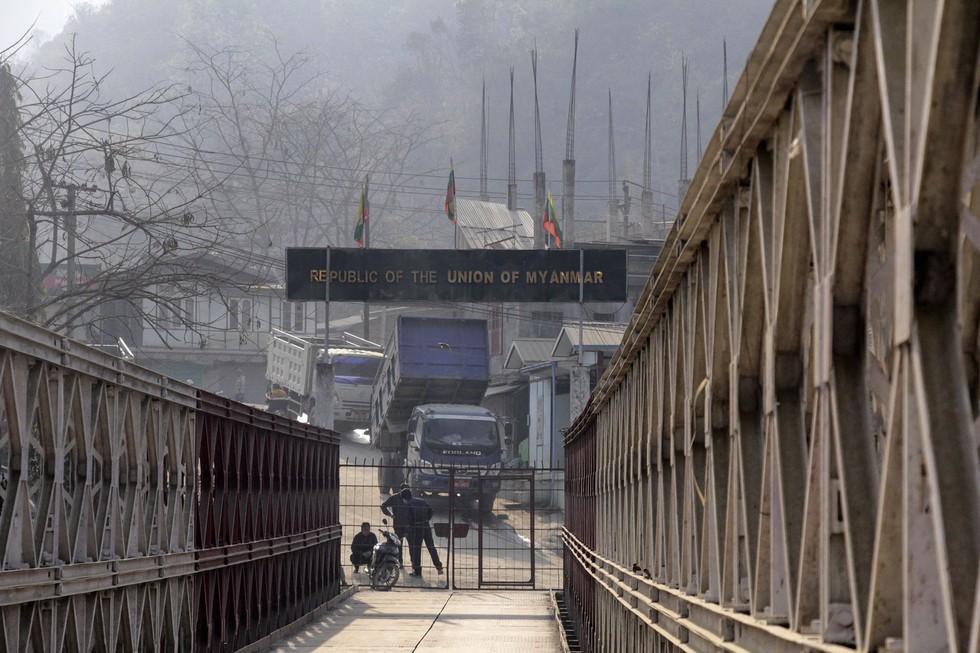
About Free Movement Regime (FMR):
- Under the FMR, all the hill tribes, whether they are citizens of India or Myanmar, can travel within 16 km on either side of the Indo-Myanmar Border (IMB).
- They can cross the border by producing a border pass with a one-year validity issued by the competent authority and can stay up to two weeks per visit.
- The FMR was implemented in 2018 as part of the Central government’s Act East policy.
- FMR is implemented by both governments for the people living along the IMB.
- This helps locals get more culturally assimilated with trans-border villages through weddings, celebrating common festivals together, and trans-border trade.
- It is a reflection of the physical, ethnic, linguistic, cultural, and fraternal linkages among the trans-border villagers.
Key Facts about Indo-Myanmar Border (IMB):
- It runs for 1,643 km in the four states of Mizoram, Manipur, Nagaland, and Arunachal Pradesh.
- It runs from the tripoint with China in the north to the tripoint with Bangladesh in the south.
- Assam Rifles is tasked with guarding the IMB.
Prelims Pointers
Jan. 28, 2024
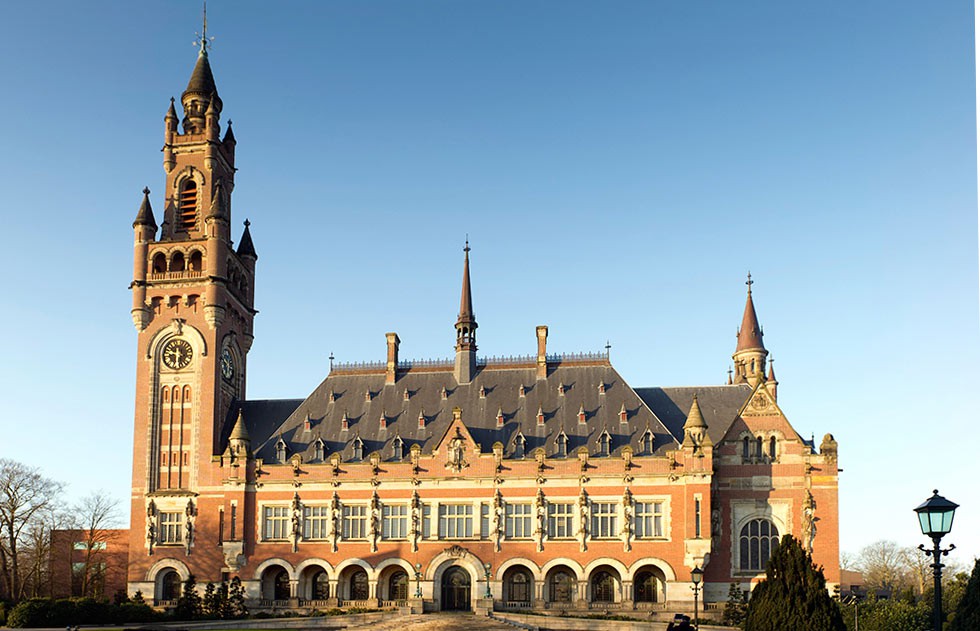
About International Court of Justice (ICJ):
- The ICJ, also known as the World Court, is the principal judicial organ of the United Nations (UN).
- It was established in June 1945 by the Charter of the UN and began work in April 1946.
- The seat of the Court is at the Peace Palace in The Hague (Netherlands).
- The hearings of the ICJ are always public.
- Official Languages: French and English
- Powers and Functions: The Court may entertain two types of cases:
- First, it can act as a dispute settlement body between two member States in what are called “contentious cases.” Such disputes may concern, in particular, land frontiers, maritime boundaries, territorial sovereignty, the non-use of force, violation of international humanitarian law, non-interference in the internal affairs of States and diplomatic relations.
- Second, it can accept requests to issue an advisory opinion on a legal question referred to it by a UN body or specialised agency. These opinions can clarify the ways in which such organisations may lawfully function or strengthen their authority in relation to their member States.
- The court's judgments in contentious cases are final and binding on the parties to a case, and without appeal.
- Unlike the Court’s judgments, advisory opinions are not binding.
- The ICJ decides disputes in accordance with international law as reflected in international conventions, international custom, general principles of law recognized by civilised nations, judicial decisions, and the writings of the most highly qualified experts on international law.
- Composition:
- It consists of 15 judges, all from different countries, who are elected to nine-year terms by majority votes in the UN General Assembly and the Security Council.
- The judges, one-third of whom are elected every three years.
- Once elected, a member of the Court is a delegate neither of the government of his own country nor of any other State.
- In addition, the ICJ Statute allows a state party to a case before it which does not have a judge of its nationality on the bench to appoint a person to sit as judge ad hoc in that specific case.
- The Court is assisted by a Registry, its permanent administrative secretariat, which is independent of the United Nations Secretariat.
Prelims Pointers
Jan. 28, 2024
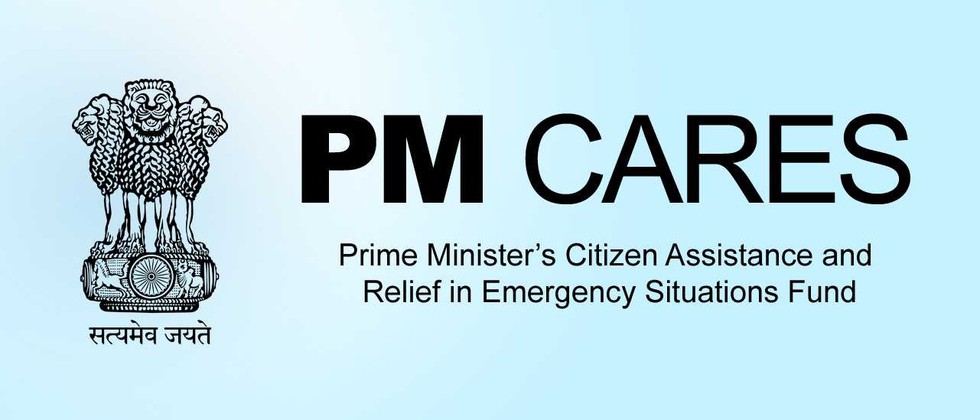
About PM CARES Fund:
- It was created on March 28, 2020, following the COVID-19 pandemic in India.
- It was set up to have a dedicated national fund to deal with any emergency and provide relief to the distressed.
- Fund Constitution:
- It has been registered as a Public Charitable Trust.
- The Prime Minister is the ex-officio Chairman of the PM CARES Fund, and the Minister of Defence, Minister of Home Affairs, and Minister of Finance of the Government of India are ex-officio Trustees of the Fund.
- The Chairperson of the Board of Trustees (Prime Minister) shall have the power to nominate three trustees to the Board of Trustees who shall be eminent persons in the fields of research, health, science, social work, law, public administration, and philanthropy.
- Any person appointed a Trustee shall act in a pro bono capacity.
- Objectives:
- To undertake and support relief or assistance of any kind relating to a public health emergency or any other kind of emergency, calamity, or distress, either man-made or natural, including the creation or upgradation of healthcare or pharmaceutical facilities, other necessary infrastructure, funding relevant research, or any other type of support.
- To render financial assistance, provide grants of payments of money, or take such other steps as may be deemed necessary by the Board of Trustees for the affected population.
- To undertake any other activity which is not inconsistent with the above objectives.
- Fund Finance:
- The fund consists entirely of voluntary contributions from individuals/organisations and does not receive any budgetary support.
- Donations to PM CARES Fund would qualify for 80G benefits for 100% exemption under the Income Tax Act, 1961.
- Donations to the PM CARES Fund will also qualify to be counted as Corporate Social Responsibility (CSR) expenditure under the Companies Act, 2013
- PM CARES Fund has also got an exemption under the Foreign Contribution Regulation Act(FCRA), and a separate account for receiving foreign donations has been opened.
- This enables the CARES Fund to accept donations and contributions from individuals and organisations based in foreign countries.
Prelims Pointers
Jan. 28, 2024

About K-Shaped Recovery:
- A K-shaped recovery occurs when, following a recession, different parts of the economy recover at different rates, times, or magnitudes.
- It leads to changes in the structure of the economy or the broader society as economic outcomes and relations are fundamentally changed before and after the recession.
- This type of recovery is called K-shaped because the paths of different parts of the economy, when charted together, may diverge, resembling the two arms of the Roman letter "K."
- The portion of the economy that recovers quickly is represented by the upper part of the K, while the lower part represents those groups that recover more slowly.
- Reasons:
- K-shaped recoveries are generally caused by disparities that existed before the recession or by a recession that impacts populations and groups differently.
- It is possible due to the creative destruction of old industries due to the development of new industries and technologies during the recession.
- Government strategies like monetary and fiscal policies used to combat the recession can lead to a K-shaped recovery. Due to the nature of the economic policies, certain industries will benefit more than others.
- Due to the nature of the recession, it can exert a unique impact on different parts of the economy, especially when a recession is coupled with a negative real economic shock that results in a lasting negative impact on certain parts of the economy.
- Example: During the COVID-19 pandemic, North America saw a K-shaped recovery where the richer individuals and industries recovered faster compared to the poor.
Prelims Pointers
Jan. 28, 2024

क्रॉनिक ऑब्सट्रक्टिव पल्मोनरी रोग (COPD) के बारे में:
- यह फेफड़ों में पुरानी सूजन संबंधी बीमारी है, जिसके कारण फेफड़ों से वायु प्रवाह बाधित होता है।
- COPD के दो मुख्य रूप हैं:
- क्रोनिक ब्रोंकाइटिस, जिसमें बलगम के साथ लंबे समय तक खांसी रहती है।
- वातस्फीति, जिसमें समय के साथ फेफड़ों को नुकसान होता है।
- COPD वाले अधिकांश लोगों में दोनों स्थितियों का संयोजन होता है।
-
कारण:
- यह आमतौर पर लंबे समय तक परेशान करने वाली गैसों या कणों के संपर्क में रहने के कारण होता है, जो अक्सर सिगरेट के धुएँ के कारण होता है।
- उच्च आय वाले देशों में, इसके 70% से अधिक मामलों का कारण तम्बाकू धूम्रपान है। निम्न और मध्यम आय वाले देशों में, तंबाकू धूम्रपान COPD के 30-40% मामलों के लिए जिम्मेदार है और घरेलू वायु प्रदूषण एक प्रमुख जोखिम कारक है।
-
संकेत और लक्षण:
- इसके सबसे आम लक्षण हैं- सांस लेने में कठिनाई, पुरानी खांसी (कभी-कभी कफ के साथ) और थकान महसूस होना।
- इसके कारण स्थिति जल्दी भी खराब हो सकती है। इन्हें फ्लेयर-अप (flare-ups) कहा जाता है। ये आम तौर पर कुछ दिनों तक चलते हैं और अक्सर अतिरिक्त दवा की आवश्यकता होती है।
- इससे पीड़ित लोगों में हृदय रोग, फेफड़ों के कैंसर और कई अन्य स्थितियों के विकसित होने का खतरा बढ़ जाता है।
-
उपचार:
- COPD का इलाज संभव नहीं है, लेकिन यह धूम्रपान न करने, वायु प्रदूषण से बचने और टीके लगवाने से बेहतर हो सकता है।
- इसका इलाज दवाओं, ऑक्सीजन और फुफ्फुसीय पुनर्वास से किया जा सकता है।

